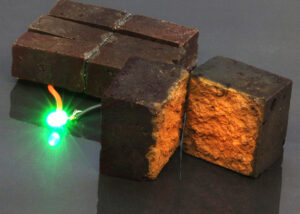
Chemists in Arts & Sciences have developed a method to make or modify “smart bricks” that can store energy until required for powering devices. (Image: D’Arcy laboratory)
Red bricks – some of the world’s cheapest and most familiar building materials – can be converted into energy storage units that can be charged to hold electricity, like a battery, according to new research from Washington University in St. Louis.
Brick has been used in walls and buildings for thousands of years, but rarely has been found fit for any other use. Now, chemists in Arts & Sciences have developed a method to make or modify “smart bricks” that can store energy until required for powering devices. A proof-of-concept published Aug...
Read More








Recent Comments